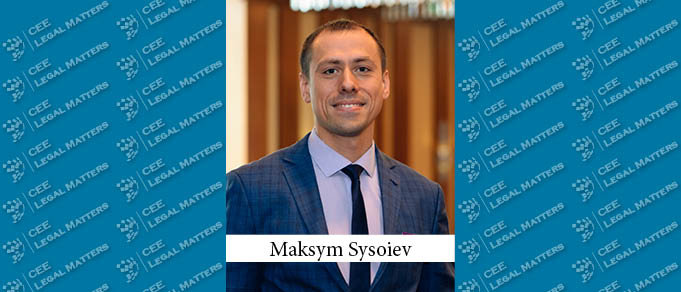On 30 June 2023, Law of Ukraine No. 3220-IX On introduction of changes to certain laws of Ukraine as to recovery of energy safety and green transformation of the energy system of Ukraine (the Law) was adopted in the second hearing in its entirety.
The Law covers key rules on guarantees of origin (GOs) for producers of electricity from renewable energy sources (RES Producers), net billing and introduces numerous other amendments to Ukrainian legislation in respect of renewables.
The Law was signed by the president of Ukraine and was officially published on 26 July 2023. Most of its provisions entered into force on 27 July 2023. The Cabinet of Ministers of Ukraine (CMU) and other central state authorities have six months from the Law’s effective date to harmonize all secondary legislation.
Below is a brief summary of key changes under the Law, according to the area of changes.
Extension of technical conditions and pre-PPAs for eligible wind projects
- Pre-PPAs for wind projects eligible to be implemented under the “green” tariff (GT) are to be extended until 31 December 2023. The respective RES Producers may apply to a State Enterprise “Guaranteed Buyer” (GB) to sign a new pre-PPA until the aforementioned date.
- At the same time, Law of Ukraine On Introduction of Changes to Certain Laws of Ukraine as to Prevention of Abuse in the Wholesale Markets dated 10 June 2023, No. 3141-IX, envisaging implementation of the REMIT regulation, envisages also a reduction in the GT for wind farms by the following coefficients:
- 0.975 – for RES Producers that commission wind power plants from 1 January 2020 until 30 June 2023
- 0.825 – for RES Producers that commission wind power plants from 1 July 2023
- Wind projects with pre-PPAs are also entitled to enter into an amendment to their grid connection agreements in order to get the new technical conditions in line with the technical conditions issued before 24 February 2022, valid until one of the following dates:
- 31 December 2024 (unconditional extension)
- 31 December 2025 if the grid connection services is revised on the day following the date of Marshal Law cancellation
Certain important changes to the GT mechanism and its operation
- The government may provide for expenditures in the state budget to support RES Producers, in particular for GT payments, on the basis of calculations from the National Energy and Utilities Services Commission (Regulator). If the government makes provisions in the respective annual state budget for costs to support RES Producers, the Regulator will reflect those costs when establishing the transmission tariff. Apparently, if such provisions are not made in the discussed budget expenditures, the Regulator will establish the transmission tariff to cover expected support for RES Producers in full.
- The RES Producers under GT will have to enter into an agreement on participation in the GB’s balancing group once the Regulator has adopted the respective secondary legislation, in accordance with the Law.
- Repairs and reconstruction of RES power plants without increasing installed capacity should not affect the amount of GT established during commissioning.
RES Producers with the GT may exit GB’s balancing group (subject to 20-day prior notice), suspend the PPA and execute the service of increasing the share of RES (basically a CfD, and here, we will refer to it as such) on the basis of the standard form to be adopted by the Regulator for the term of the GT with simultaneous suspension of the PPA under the GT. Alternatively, RES - Producers may also terminate the PPA and later it may re-execute the PPA.
- The CfD should cover electricity sold by RES Producers under bilateral contracts, at day-ahead and intraday markets.
- It appears that the basis for calculating payments under the CfD will be the difference between the established GT and the larger of the average index prices in the day-ahead market or regulated bilateral contracts market, as determined by the Law. If the larger average market price as discussed above exceeds the auction price, the difference will be paid by the producer to the GB.
- Switching from one to another form of support does not affect the rate of the established GT.
- RES Producers exiting from the GB’s balancing group are entitled to return (subject to a 60-day prior notice) and PPAs under the GT will be resumed with apparent simultaneous suspension of the CfD.
- The guarantee of GT payments and the auction price are expressly applied to RES power plants included in the GB’s balancing group, while RES producers under a CfD are getting the guarantee of payments under them.
- The RES producers with the GT or auction support may enter into financial PPAs both if they withdraw from the GB’s balancing group as well as if they sell GOs under such financial PPAs.
- Only the maximum volume of electricity to be produced by each installation as specified on the generating equipment in the license will be subject to purchase by the GB. Any excess will be purchased at the value of imbalance for the respective hour.
- Operation of the GB’s balancing group will be regulated by the agreement on participation in GB’s balancing group entered into on the basis of the standard agreement to be established by the Regulator. Entering into the standard agreement is subject to entering into an agreement on balancing services with the transmission system operator.
- The Law amends provisions on calculating the services rendered by the GB on the increase of RES share in the market to be covered from the transmission tariff payments. It also specifies that income from sales of GOs, export and import of electricity, etc., should be directed to cover payments to RES Producers.
- RES Producers are expressly allowed to export and import electricity from/to Ukraine.
- The GT for households beginning 1 January 2024 has been established. Households will be entitled to GT payments if they also consume electricity. The decrease of GT depending on the year of commissioning will be expedited.
- The GT for solar power plants up to 1 MW commissioned after 1 January 2024 will be reduced by coefficient of 0.4.
- Application of the GT to biomass/biogas power plants was extended to power plants commissioned until 1 January 2024.
Lifting restrictions for PPAs of RES Producers without state support
- RES Producers without an established GT or auction price will not be obliged to sell electricity under bilateral PPAs (including corporate and utility PPAs as known in Europe) via special electronic auctions regulated by the procedure to be adopted by the CMU.
- The Regulator will not be entitled to set a maximum term for PPAs for RES Producers without state support.
Guarantees of origin (GOs)
- The Law introduces the term “register of guarantees of origin of electrical energy produced from renewable energy sources” (Register), which is defined as electronic system securing formation of GOs, recording information on issuance, circulation and termination of GOs produced from RES and provision of information about them.
- The GO itself will be defined as an electronic document produced by virtue of the Registry, confirming that the determined quantity of electrical energy is produced from RES. It further establishes its ecological value (amount of greenhouse gases avoided by production of electricity from RES) and confirms rights related to positive effect (forming a share in the National Contribution of Ukraine in Greenhouse Gases Reduction from production of electricity from RES).
- GOs will be issued and can be circulated in accordance with the procedure to be established by the CMU (“GOs Procedure”). Proposals for the GOs Procedures are prepared by the Regulator and submitted via the Ministry of Energy to the CMU.
- Title in the GO may be transferred separately from the respective electricity.
- The Regulator is an authorized agency on issuance and circulation of GOs related to electricity produced in Ukraine and secure the Registry functioning.
- GOs may be issued for the actual volume electricity fed to the grid or used for own consumption by virtue of the Registry on the basis of commercial metering data.
- Information in the Registry will be public unless the legislation will set forth otherwise.
- In addition to the Registry, the Regulator administers a register on RES installations for production of electricity information from which is part of the Registry.
- More details on functioning of the Registry, circulation of GOs, etc., is in the GOs Procedure.
- GOs must include the following information:
- Type of RES
- Beginning and final date of the operational period
- Location, installed capacity and characteristics of the RES installations
- Availability and type of state support
- Commissioning date of RES installations
- Date and country of issuance
- Environmental value
- Unique identification number
- GOs are issued to confirm production of 1 MWh. Only one GO may be issued for each produced volume of electricity.
- GOs are formed automatically in the Registry on the basis of information of the commercial metering.
- GOs are circulated in the market for 12-month terms. The owner of the GO must terminate the GO within 18 months after the production date, otherwise it becomes invalid.
- RES producers entitled to GOs are subject to inspections by the Regulator. Generation installations of the consumer are subject to inspections by the respective system operator. In case of inaccuracy of data submitted to the Registry (use of non-RES or incorrect portion of RES), the respective RES installations are excluded from the Registry; registration of the installation in the Registry can be repeated after a six-to-36-month period (depending on the percentage of non-compliant electricity in the total volume of registered GOs).
- All RES producers are entitled to obtain GOs and can freely transfer GOs until the expiry date, except for RES producers under the GT or auction price—those GOs automatically transfer to the GB, and GOs of prosumers with the GT, which automatically transfers to the respective universal services supplier that buys electricity from them at the established GT. The GB and universal services suppliers are entitled to sell GOs and use respective proceeds for payments for electricity to RES Producers.
- Export and import of electricity produced by RES Producers are expressly allowed.
- GOs are to be used to disclose information about shares of various energy sources in electricity acquired by the supplier or produced at its installations to end users. This procedure will be established by the Regulator.
- Recognition of GOs produced outside Ukraine, as well as termination of Ukrainian GOs outside of Ukraine, will be carried out on the basis of international treaties. If the Regulator does not recognize a GO produced in a country of the European Energy Community (EEC), it must inform the EEC secretariat.
- The mechanism of GOs for biomethane will expressly cover liquified or compressed biomethane.
Changes to the auction system
- Instead of being obliged to pay the auction price, eligible RES Producers may only receive payments only under a CfD (CfDs for auction price and GTs are regulated quite similarly; key provisions are discussed above).
- Annual quotas for auctions may also establish the following:
- Technical parameters of energy storage at RES installations
- Time intervals for which the support could be sought
- Load profiles
- Auction price caps for renewables (suggested by the Regulator)
- Share of the auction price that is fixed in EUR (but not less than 50 percent)
- The requirements to provide documents on land or grid connection agreements in order to participate in an auction have been cancelled, but they will be added within six months following the CfD execution, which is apparently not in a sufficient amount.
- Auctions are planned to be implemented starting from 1 July 2023.
- The period for commissioning power plants after entering into the CfD with the auction winner has been shortened for:
- Solar power plants - to 18 months (reduced from two years)
- Wind and other RES power plants - to 36 months (remains unchanged)
- Commissioning of power plants or their parts must be confirmed by documents confirming grid connection in addition to the document confirming construction of the power plant itself—as was the past practice.
- The winner will have six months to provide documents concerning land title for the construction (title to the real estate concerning rooftop solar).
- The term of the support under the CfD is 12 years instead of 20 years, as envisaged in the past.
Net billing
- There is a mechanism on self-production according to which, settlement is based on (i) the value of electricity output produced from alternative energy sources to the electrical network by generation installations of consumers and (ii) the value of consumption by them of electricity from the network (given the value of services on transmission and/or distribution of electrical energy).
- The following are entitled to the self-production support scheme (on the basis of net billing principles): (i) RES installations up to 30 kW, (ii) small prosumers other than households with RES installations up to 50 kW, (iii) other consumers with RES installations up to the capacity of consuming installations of such consumers, (iv) other consumers with any installations regardless of energy source commissioned before 31 December 2029 and (v) third parties owning such installations connected to the network of consumers or their installations provided that the consumer buys 100 percent of their output. Third-party generating installations may include installations covered by the GT, but the consumer itself cannot use both the GT and net billing benefits.
- The capacity of installations is limited by the maximum allowed grid-connection capacity of the prosumer.
- According to the proposed support scheme, a net billing agreement is executed between prosumers and universal services suppliers, or suppliers of electricity, in certain cases established by law on the basis of the template agreement approved by the Regulator.
- Net billing envisages settlements on the basis of hourly production and consumption taking account of distribution/transmission charges within a month.
- Prosumers other than households and small prosumers may feed to the grid only up to 50 percent of the prosumer’s allowed grid connection capacity. Subject to compliance with certain technical requirements of the operators, the allowed capacity could be increased. If the aforementioned restrictions are violated, the prosumer may lose net billing support for one calendar year.
- Households and small prosumers other than households will be entitled to sell electricity to universal services suppliers at day-ahead prices. Apparently, all other prosumers may enter into net billing agreements with power suppliers at freely agreed prices.
- Settlements should be made on a monthly basis. If the value of electricity consumed from the grid is more than the value of the electricity fed to the grid, then the prosumer must pay the difference to the supplier within the following month, and if the volume of electricity fed to the grid exceeds the volume consumed, the supplier must make the payment to the prosumer.
- In addition, the Law envisages a special state program to incentivize installations of distributed generation and storage, to be approved by the CMU.
Aggregation
- A new market player—an aggregator—will be involved in consolidating installations owned by other market players that are designed for the consumption/production/storage of electricity, in order to trade electricity or render respective services in the market (balancing and ancillary services).
- Aggregation will be subject to licensing, unless the market participant already has a license on the electricity market.
- The aggregator will interact with other group participants on the basis of an agreement on participation in the aggregated group; the template for this agreement will be established by the Regulator. Aggregation group participants are free to join and withdraw from an aggregation group. A payment can be required for withdrawing from an aggregation group (this does not apply to households and small industrial consumers).
- Aggregators are responsible for imbalances (except for electricity for consuming installations that are bought from the supplier) and are prohibited from supplying, transmitting or distributing electricity.
- Aggregators can buy and sell electricity as well as render balancing and ancillary services in the market.
- Each electrical installation can only be in one aggregation group, and the electrical installation of one aggregated group is deemed as one aggregated installation.
Please note that the Law provides for additional important regulations/amendments not directly related to RES Producers, such as regulations for industrial parks, small distribution systems, etc.
This information does not constitute legal advice and is merely the opinion of the author.
By Maksym Sysoiev, Partner, Dentons
















